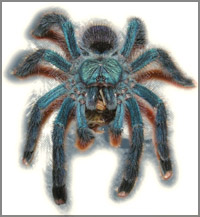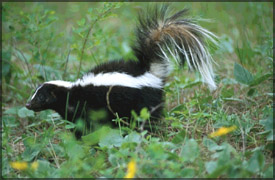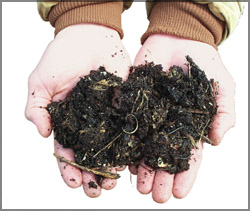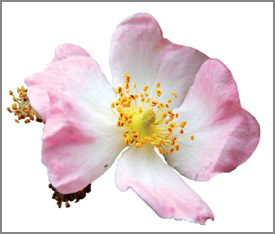
Unusual pe(s)ts
An exotic or unusual pet is like a small part of untamed Nature. For
some people, exotics remind them that the world contains millions of
species that have evolved free from human intervention. the world contains millions of
species that have evolved free from human intervention.
Take the Madagascar hissing cockroach, for instance. The very name
sends chills up the spines of some people. Others, however, will be
fascinated at the elaborate rituals these creatures have developed to
defend territory, produce offspring, or simply to identify themselves.
The following are unusual and exotic pets that a few number of people
keep as their companions throughout the world.
Piranhas live up to their Hollywood reputation as vicious fish that
will not hesitate to chew off the hand that feeds it. This isn't a pet
for the faint of heart - only experienced aquarists should take on the
piranha.
Tarantulas, contrary to popular belief, are not usually dangerous or
even aggressive.
These large, hairy, and frequently beautiful animals are gaining
popularity as interesting, low-maintenance pets.
The wallaby is a miniature version of the kangaroo. The Latin name
for the wallaby is macropod, which means "Big Foot." They are
affectionate, playful and mischievous pets.
The Madagascar hissing cockroach is no ordinary roach. For one thing,
it can grow to up to 3 inches long and over an inch wide - not something
you would swat with a rolled-up magazine! They are hardy creatures that
do not bite, and in fact make great exotic pets for children.
The skunk was once the Rodney Dangerfield of the animal world. But
the perception of the skunk is improving as more people adopt these
native-born animals as pets.
Sugar gliders are marsupials native to Australia, New Guinea and
Indonesia that have been blessed with the ability to glide through the
trees in their natural habitats. From a good height, they can take
"flights" of more than 150 feet.
 The "Pac Man" frog is an apt nickname for the ornery ornate horned
frog. Legend says that once it bites, it won't let go until sundown.
Just like the computer icon, this frog is ready to gobble everything in
its path, and will bite cage mates, siblings, even its human handler. The "Pac Man" frog is an apt nickname for the ornery ornate horned
frog. Legend says that once it bites, it won't let go until sundown.
Just like the computer icon, this frog is ready to gobble everything in
its path, and will bite cage mates, siblings, even its human handler.
The hermit crab is, curiously, neither a hermit nor a crab. As a pet,
he's quite sociable and does well in groups of his own species. There
are about 800 species of hermit crabs and can be found all over the
world. However, there are only two species usually found in the pet
trade: the purple claw crab and the Ecuadorian crab.
Potbellied pigs were first introduced to the United States from Asia
15 years ago. They are easily trained and have an alert curiosity and
affectionate nature. They're smarter than the smartest dogs, and just as
appreciative of a good belly-scratch. But prospective owners should be
aware that cute piglets can grow to be quite large pigs.
Stick insects are one of the most popular insects to keep as pets.
They can hide in plain sight with camouflage that is so perfect they are
nearly indistinguishable from the branches of the plants on which they
feed.
Courtesy Petplace.com
Flowers of Sri Lanka:
The medium for plants
Manoj Dissanayeke
The medium in which you grow your plants has a huge impact on the
growth of the plant. Using the correct medium leads to healthy growth of
the plant while the wrong medium results in plants that have less bloom
and are easily prone to diseases. medium leads to healthy growth of
the plant while the wrong medium results in plants that have less bloom
and are easily prone to diseases.
Therefore the medium acts as a transporter in fulfilling the needs of
the plant. It keeps food, air and water stored within and provides the
plants with the support to stand up on its own.
Other than fulfilling the needs of the plants, the medium is also a
path for the bacteria, fungus and viruses to enter the plant's system.
This is an easy method for the crop to catch infections.
The essential qualities of a medium
Different people use different types of mediums for their crops. Leaf
mould, compost, cow dung, outer layer soil, charcoal, pieces of tile and
choir are some of those popularly used. These should be used according
to the type of plant and required amount.
A medium has a number of duties to fulfil. These duties can be
categorised into three sections:

1. Physical duties
2. Chemical duties
3. Global duties
Physical duties
Water holding capacity is the most important feature in this
category. The capacity to absorb a lot of water while other plants
prefer otherwise.
Therefore it is essential to include the exact amount of ingredients
such as leaf mould, soil and pebbles according to the need of the crop.
Chemical duties
The PH level, and nutrient exchange go along with this group. Some
plants prefer acidic mediums while others prefer alcaline mediums. If
you use chemical fertilisers for a long period the PH level of the soil
changes automatically. To change it back to the previous level, use
dolomite.
Global duties
A lot of microscopic beings live on soil. Their activities enhance
the quality of the medium. Some destroy the unwanted particles in the
soil while others add nitrogen to the medium. unwanted particles in the
soil while others add nitrogen to the medium.
This is known as nitrogen fixation. These microscopic beings also
help in decay but over use of chemical products destroy them. Therefore
it is always best to use natural compost fertilisers for your crop.
(The writer is the Agriculture Instructor of Royal Botanical Gardens,
Peradeniya) |

